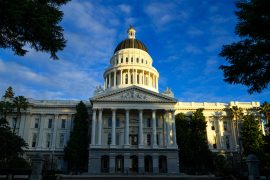Millions of consumers and small businesses will receive an estimated $1.3 billion in rebates from their health plans this summer under a provision of the health care law that effectively limits what insurers can charge for administration and profits, a new study projects.
Almost one third of people who bought their own insurance last year will get rebates averaging $127, according to an analysis of state data by the nonpartisan Kaiser Family Foundation. (KHN is an editorially independent program of the foundation.)
“This alone is not going to make health insurance affordable for large numbers of people, but it is getting excess administrative cost out of the system,” says Larry Levitt, a study author.
The percentage of consumers and businesses in line for rebates varies widely by state. In Texas, for example, 92 percent of consumers who purchased individual policies are expected to get rebates because insurers spent too little of their premium dollars on medical care. But in Vermont, Rhode Island, Iowa and Hawaii, insurers are likely to owe less than 1 percent of consumers who bought policies on the individual market.
Under the federal law, insurers must spend at least 80 percent of premium revenues on medical costs or quality improvements; the remainder can go toward administrative costs, sales commissions and profits. If companies set premiums too high, rebates in the form of checks or discounts off future premiums are due consumers and businesses by Aug. 1.
The requirement, aimed at holding insurers more accountable and slowing premium increases, went into effect last year and applies to all health plans, except those offered by self-insured employers. Insurers had criticized the rule as being too strict, while sales agents feared insurers would reduce their commissions.
The figures are based on the latest estimates insurers provided state regulators, so the actual rebate amounts may differ, according to the report’s authors. The total dollar projection is similar to one released Wednesday by a Goldman Sachs analyst, but slightly lower than one made previously by the government, which had said rebates could be worth up to $1.4 billion.
Nationally, an estimated 3.4 million people who bought their own coverage are projected to receive rebates this year from 215 insurance plans, according to the study. The biggest dollar amounts are expected to go to consumers in Alaska, where per person rebates are expected to average $305, Maryland, $294, Pennsylvania, $243 and Idaho, $241. Insurers hit the spending targets for policies sold directly to consumers in several states, including Hawaii, Maine and the District of Columbia, so no rebates are expected for individual consumers there.
More than a dozen states sought to relax the standard for insurance sold directly to consumers, saying it would cause insurers to withdraw from their markets. The Obama administration granted seven such requests, choosing to phase in the requirement between now and 2014 in Georgia, Iowa, Kentucky, Maine, Nevada, New Hampshire and North Carolina.
Rebates averaging $76 per enrollee are projected to go to more than one quarter of small businesses nationally, covering an estimated 4.9 million people. When averaged by state, the biggest per-enrollee rebates will go to businesses in Alaska at $517 and Alabama, at $203 and Oregon, $172. No rebates will go to small businesses in eight states, where insurers met their spending targets, including Hawaii, Minnesota and North Dakota.
For the most part, insurers who offer coverage to large employers met the targets. Still, 19 percent of large employers, covering 7.5 million people, are likely to get rebates averaging $72 per member. Employers must use some or all of the rebate for the benefit of workers.
America’s Health Insurance Plans, the industry trade group, said the spending rule could have unintended consequences, potentially causing some insurers to withdraw from certain markets and that it does not address the biggest reason for rising premiums – underlying health care costs.
“Moreover, the taxes, benefit mandates and other regulations in the health care reform law will cause premium increases that far exceed the value of any prospective rebates,” the group said in a written statement.
Ana Gupte, a senior health industry analyst at Sanford Bernstein, says insurers in some markets lowered premiums to avoid paying rebates, but others risked having to pay a rebate because they didn’t want to underprice their policies. Some insurers may have miscalculated – and thus owe a refund – because of lower-than-expected utilization of health care kept their medical costs below projections, she says.
Looking ahead, Gupte expects to see fewer rebates in future years “because utilization (of medical care) will go back up, so the spread between pricing and cost will get narrower.”
Still, Alexandria-Va.-based health industry consultant Robert Laszewski says the projected rebates are so small as to count mainly as a “rounding error” that most consumers won’t even notice.
“If it saved you $200 on a $10,000 premium, does it feel like your insurance is more affordable?” asked Laszewski, a former insurance industry executive. He said some sales agents who saw insurers reduce their commissions as a result of the law have also begun charging clients a fee for helping them choose a policy.
But consumer advocate Timothy Jost, a professor at Washington and Lee University School of Law, says the goal was never to deliver large refunds.
“The purpose isn’t to generate rebates, but to force insurers to align their premiums more closely with their (medical) claims costs,” says Jost. “Each year, premium costs have gone up more than medical costs, so what the rule does is force insurers to be more efficient and, if they charge too much, to give some back.”






